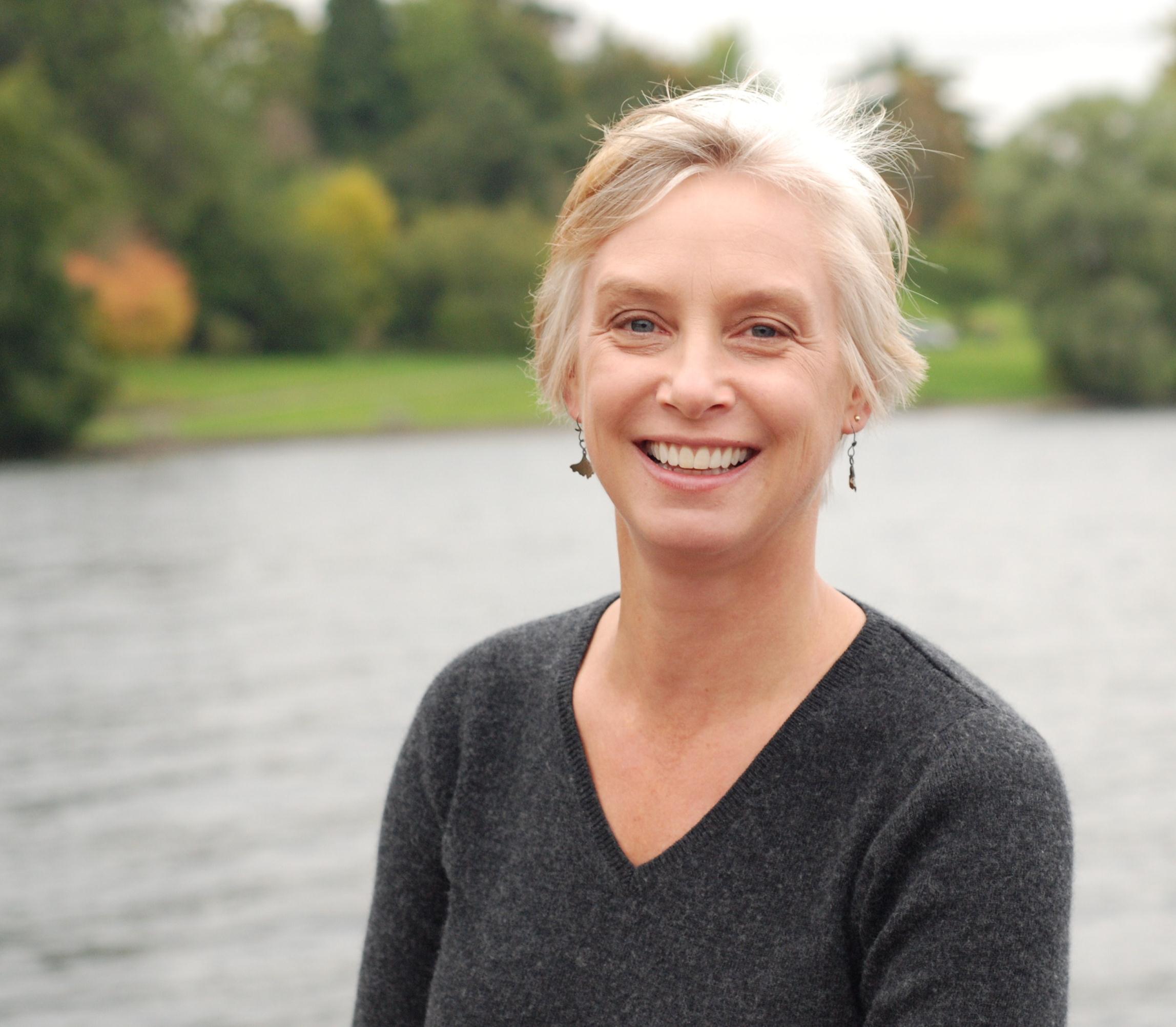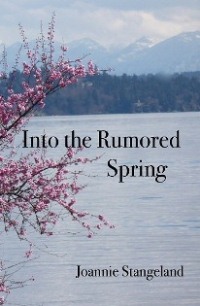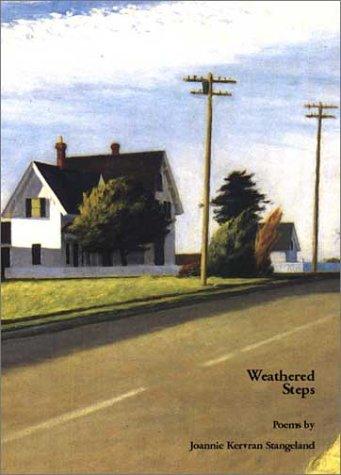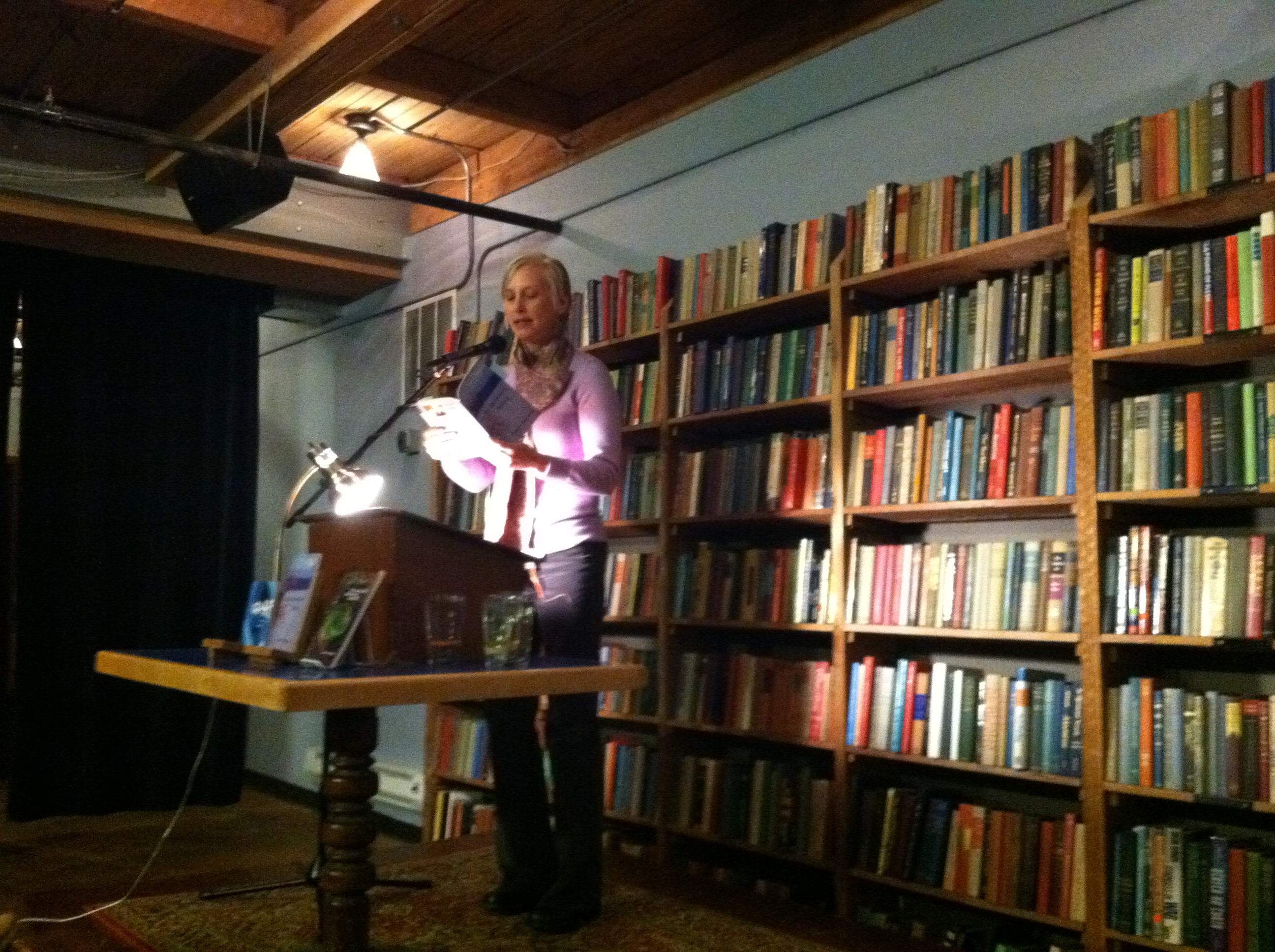|

|
| Joannie Stangeland |
Joannie Stangeland, who teaches writing at Richard Hugo House and other venues and works by day at Microsoft, lives in Seattle with her
husband and any grown kids who alight for a night or longer. This is her third poetry collection. Her first, A Steady Longing for Flight, won the Floating Bridge Press Chapbook Award. Her second collection, Weathered Steps, was published by Rose Alley Press. Joannie’s poems have also appeared in Midwest Quarterly, Valparaiso Poetry Review, Painted Bride Quarterly Online, riverrun, Tulane Review, and other
journals. Joannie is poetry editor for The Smoking Poet.

Zinta
for The Smoking Poet: It all started with some wonderful poems, Joannie, that you submitted to our literary magazine years
ago … and you were too good to pass by. The rest is history. You’ve been our poetry editor for some time now,
and the fact that our poetry pages show such diversity in style and topic, and always a high level of quality, is all thanks
to you.
But now it’s a moment to show the limelight
back in your direction, even as you have shown it on our contributing poets. In 2011, Ravenna Press published your poetry
collection, Into the Rumored Spring. The breathtaking poetry is what your fans and readers know to expect from you … but this
collection has a special cause attached to it, a special theme. Can you tell us more about that?
Joannie
Stangeland: I wrote these poems for a friend who was undergoing treatment for breast cancer. It was a strange year, when
five friends—or friends of friends or daughters of friends—were all fighting that disease. All of these women
were amazing and strong—and they’re all doing well now, which is reason to cheer. But during that late winter
five years ago people gathered around to bring meals or drive to appointments—and this friend didn’t seem to need
that dinner or a ride. I wanted to do something, and I ended up writing a book of poems.
TSP:
I understand proceeds from sales of the book are going to a charitable cause?
Joannie:
I’m donating author proceeds to Seattle Cancer Care Alliance. I’ve felt honored to be able to write these poems and humbled by the strength of all those women, and so I’m
glad that the book can give something back.
TSP:
Into the Rumored Spring is your third poetry collection. What sets it apart? I
imagine the tribute to your friend, of course, but perhaps also in some evolutionary way in your poetic style? Were there
any experiments going on in your manner of expression? Discoveries?
Joannie:
Each poem was a discovery—and sometimes they showed up unannounced, demanding to be written. When I started, I was influenced
by the prose poems in Brigitte Byrd’s Fence Above the Sea, the stream of consciousness and the surrealism it invites. But I didn’t want to write prose poems, so I wrote
unrhymed couplets—a lot of couplets. And then the couplets began to coalesce into individual poems. Many of the poems
still appear in couplets.
Later, influenced by Oliver de la Paz’s
book Furious Lullabies, I decided to bring some different voices and different perspectives into the poem—almost like little suites: the
poems about the hours, the different songs, and then some poems about writing, because my friend is also a writer.
TSP:
There are many kinds of medicines. Only recently has our own health care system in the United States begun to come around
full circle and understand that good health is not just about caring for the physical body. It is also about nurturing the
spirit, the intellect, the whole of a person. Were your poems, and the writing of them, meant to be a kind of medicine for
your friend? Perhaps also for yourself in your grief and worry during her illness?
Joannie:
The poems were the only thing I felt I could do. If she’d needed me to bring her dinner, I would have done that and
not written the poems. But I think it was also healing for me because it helped me to face worry and loss—worry for
this friend and other friends and the loss of my best friend’s mom when we were kids and other friends’ moms.
I think many of us have a long history and a complex relationship with breast cancer, and other cancers, and I’m sure
it helped me to put all that uncertainty—and hope—into words.
TSP: Time slows down in this collection. “Minutes
tick, a sadist’s metronome ….” (The Hours of Quiet). Occasionally, it even seems to stand still. I would
guess that anyone who has undergone serious illness or chronic pain knows that sensation of entering a kind of time warp.
Details missed in the everyday become prominent, important. It is as if nothing is happening in these poems … and yet
all of life is happening. And the end of life looming. Can you share how you considered the concept of time, of time passing
and stopping, when you wrote this collection?
Joannie:
I was trying very hard not to think of the end of life looming—and, fortunately, it wasn’t! But I was feeling
that sudden disruption, and the way time stretches out when you don’t know what’s coming next. I thought about
the way pain exhausts a person and also how hard it is for someone who’s really active to be suddenly sidelined. And
then in all these women I noticed a drive to get back to work, to rowing, to dancing, to writing—to normal.

|
| Weathered Steps, a previous collection by Joannie Stangeland |
TSP: Certain themes, images, objects appear again and again. For example, water ….
moths …. the woman’s daughters … her dog named Friday … Venice … Was this a technique to keep
us returning to the same place where the patient waited and waited … or …. ?
Joannie:
The stream of consciousness kept bringing me back—certainly to the daughters and her husband and their dog—and
rowing. But the book began with a moth—the moment when I was walking down my stairs and I saw a moth on the window and
I thought about my friend (whose father was an entomologist), and I thought, “I’ll write a poem for her.”
(Kind of a bold idea, right?)
I wrote for several days, just the stream-of-conscious
images. Then I began to sort through the free writing and it turned into several poems. The moth became a persistent image.
Venice appeared because I was writing about being on the water and in my brain that shortcuts right away to Venice. Plus,
Venice is old, which for me represents continuation.
TSP:
Yet another form of structure that you build the collection upon: at regular intervals poems called “Intermezzo.”
And they work just like that, little intervals, breathers, moments of light. Talk to us about your thought process and means
of organization in general, Joannie, of how you put this collection together and gave it structure, how you decided to order
it. The effect is very subtle yet precise.
Joannie:
The Intermezzo poems were little breaks. All this scary stuff, the questions, the uncertainty, the long medical names
for terrifying things—sometimes you need a little break. When I was sorting through all the stream-of-consciousness
free writing and dividing lines and images up into separate poems, some of those images fell into these little poems.
As a whole, the book follows an arc from illness
to healing to well-being—to being on the water. For more precise help with the order of poems, I turned to Judith Skillman, who helped me with the section structure and organization.
TSP:
When I’ve written about events, people close to my heart, especially painful events, it can mean opening old wounds
all over again. Yet if a writer takes shortcuts, it shows. There are no shortcuts in excellent writing such as yours. Did
this collection require that of you? How did you cope with dealing with such heart-sensitive subject matter as the possible
loss, and surely the suffering, of a close friend?
Joannie:
Opening the old wounds is hard—and that happens a lot when I write about grief and death. But in these poems, I was
thinking more about courage and the persistent conviction that, even in the longest, slowest hours, this would come out alright.
When fear was present, it was in the shadows, not in the spotlight. Or maybe I was in a lot of denial.
TSP:
How did this collection differ for you from your previous two?
Joannie:
This is my first collection that is entirely devoted to one theme—illness and healing, surviving and thriving—all
the poems written with a specific intent. The first two collections were assembled from existing poems. That’s odd,
because a chapbook is made for exploring a single idea. But my first chapbook was pretty much every decent poem I’d
written up until then—the core of the book being the poems I wrote after my first husband’s death and then some
poems I wrote as I began to open up to a relationship with my second husband. That’s quite a range of experiences. My
second chapbook, Weathered Steps, was published by Rose Alley Press, which is dedicated primarily to formal verse, so form took center stage.
Not all of the poems I wrote made it into the final
collection—and the manuscript went through a lot of versions. I printed out the first version on notebook paper and
gave it to my friend for her birthday. But then more poems kept coming—including the songs and the hours—and so
every once in a while when we’d meet for coffee I’d bring a new version. But I kept hoping that someday I’d
be able to bring her a real book. And I feel so grateful that I was able to do that.
TSP:
Where can readers find it? Are you doing any poetry readings?
Joannie:
Into the Rumored Spring is available from Ravenna Press. Also, I’ll be reading in New York March 12, at the Cornelia Street Café. March 14, I’ll be up in Provincetown, Massachusetts, at the Writer’s Voice Café, March
15 in West Dennis at O’Shea’s, and March 17 in Brockton at the Brockton Public Library. In April, I’ll be back on the West Coast reading at Edmonds Bookshop on April 19.

|
| Joannie at an author's reading |
TSP:
We’ve included here a sample poem from the collection at your choice. Please tell us a little about this particular
poem and why it’s especially close to your heart …
Joannie:
I’m choosing “Her Own Same” because it’s one of the poems that wouldn’t let me sleep—I
had to get up and write it—and because it speaks to weathering changes that can batter a person without losing one’s
fundamental identity.
Her Own Same
After the knife, she awoke
to a new body and
inside,
her own same self.
She thinks about all
the parts of her, mysterious
organs
under her skin.
Late winter light plays
across her resting eyes,
a tease
when fatigue weighs on her
but there are ferns to be cut back,
sedum and
yarrow, a flourish—
la verdeggiante speranza.
Now she must be reacquainted,
as though her body
has been
lingering without her
along the Grand Canal,
lavato al sole and the lilac
light of wisteria
and she will bump into—carefully—
her
body at an art opening,
a book signing, or the coffee house
on the corner. She must
introduce herself to
knees and hands,
the arms she grew up with,
chest where her breasts were,
the legs and lungs
she relies on,
her own same.
|

